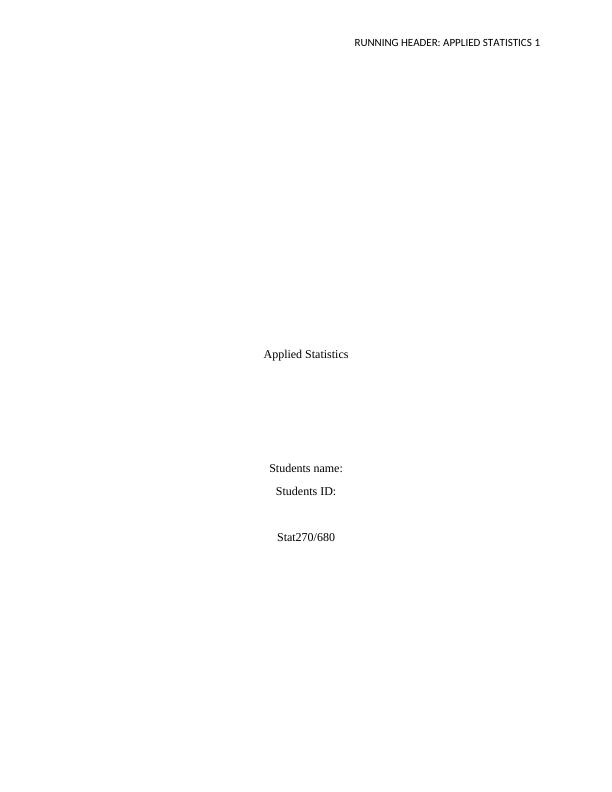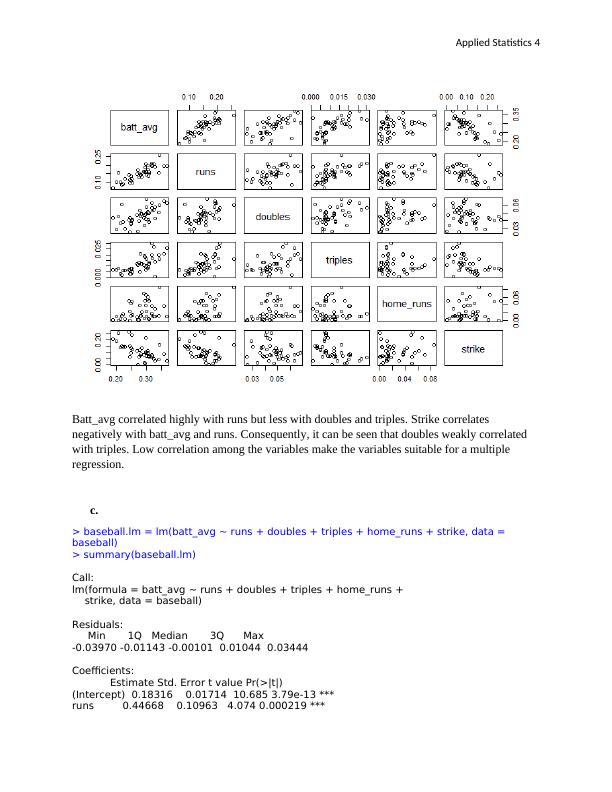Applied Statistics: ANOVA and Multiple Regression Analysis
11 Pages2461 Words321 Views
Added on 2023-05-31
About This Document
This article discusses the use of ANOVA and multiple regression analysis in applied statistics. It includes examples of hypothesis testing and model building using R programming.
Applied Statistics: ANOVA and Multiple Regression Analysis
Added on 2023-05-31
ShareRelated Documents
End of preview
Want to access all the pages? Upload your documents or become a member.
Comparison of Two Experiments on Perimeter of Airway Basement Membrane (PBM)
|15
|2698
|263
Analyzing Registered and Casual Users: Linear Regression, T-Test, and ANOVA Results
|7
|970
|418




